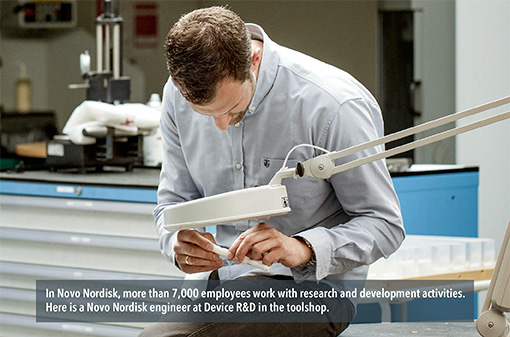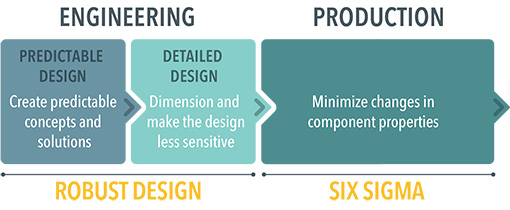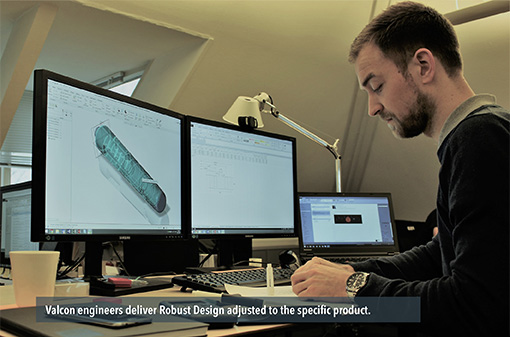Robust Design compliance as a strong competitive advantage
Compliance with various standards in product development often amounts to intense requirements within both R&D and production. Implementing a Robust Design such as Six Theta from Valcon can significantly impact these challenges.

Applying the Pareto 80/20 optimisation rule to compliance allows Robust Design to focus and increase the efficiency of procedures and to provide a competitive advantage.
The trick with Robust Design is to eliminate the costly iterations and thus make designs right the first time. Robust Design relies on the philosophy that optimisation in design is the next evolutionary step within engineering.
Robust Design (the basis for the Six Theta toolbox by Valcon) thus represents a major opportunity for industrial development companies to shorten the ramp-up time for R&D processes and create a more robust end result by simplifying the designs, cutting off superfluous interfaces, making the designs more tolerant towards over-constraints, which usually force tighter tolerances that are expensive to achieve.
According to Niels-Aage Hansen, Chief Engineer of Novo Nordisk, the definition of Robust Design is: “A design that is less sensitive to variation and that will therefore sustainably meet requirements. Working with Robust Design means optimising the design by systematic assessment and calculations as opposed to the use of trial and error. The robustness KPIs are leading indicators for quality of the mechanical design.”
The industry has perfected standardised products via Six Sigma®. However, Robust Design represents a blind spot in the industry, and by making initial rough calculations on designs, it is possible to reach an even higher level of predictability. This saves precious time on detailing the designing, testing and prototyping necessary to reach Sig Sigma® compliance.
Thus, it is a far more efficient process for allocating the same resources to innovation and meeting the high demands of punctuality when releasing new products.

During the 18 months required for implementation, Novo Nordisk was shown to be the type of organisation ready for the necessary change in mindset that Valcon wished to implement. Valcon wanted a change of culture in design methods, and as the design changes were implemented throughout the organisation from R&D to QA, these methods succeeded. The new design paradigm meant that engineers had to adapt to making rough calculations on designs before settling on one in particular. They also had to identify and eliminate ‘design waste’, and production had to adjust to the new design.

“To support and decide that Robust Design should be mandatory in Novo Nordisk Device R&D required an intense dialogue and training of our highly skilled engineers and production employees. The evident benefits of the Robust Design process carry a huge benefit for our manufacturing economy and improved patient experience in the long term.” – Kenneth Strømdahl, senior vice president of Device R&D, Novo Nordisk.
When analysing non-compliant products, Valcon’s engineers usually find approximately fifteen weaknesses per component in any given design. By being proactive about implementing the new design, companies can focus their resources on generating new products that put them in a superior competitive position instead of wrestling with complications from high tolerance-demanding designs that have already exceeded budgets.
With globalisation comes an increased demand for ambidexterity and agility, and industries are forced to seek out new paths in order to uphold a competitive position in an environment that keeps pressuring prices down. One possible path is to lower costs by moving production to low-cost countries while meeting the high compliance demands in production. Another path is to simply be smarter about the design.